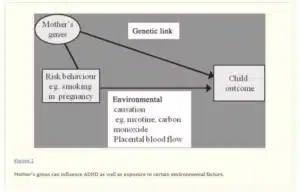This summary delves into the relationship between hyperbaric oxygen therapy (HBOT) and cancer treatment. It covers how HBOT can support people undergoing radiation treatments and be stronger and have more energy to face the treatment protocols. It draws insights from multiple studies and reviews to understand the impact of HBOT on radiation injuries, tumor growth, and tumor microenvironments.
Relationship with Hyperbaric Oxygen:
Hyperbaric oxygen therapy (HBOT) holds promise as a treatment approach for various aspects of cancer and its treatment. Research has shown its potential in mitigating radiation injuries and improving the effectiveness of radiation therapy. Fernández et al. (2020) conducted a review highlighting that HBOT, particularly at pressures exceeding 2 absolute atmospheres (ata), can reduce late-onset radiation injuries in areas such as the head and neck, bone, prostate, and bladder. It also appears to prevent osteoradionecrosis following dental extractions in irradiated regions. Additionally, HBOT at 2 ata has demonstrated promise in enhancing the effectiveness of radiation therapy for head and neck tumors and achieving positive outcomes in high-grade gliomas.
How to do Cancer assistance with HBOT
Moreover, HBOT has been investigated in the context of tumor suppression. Chen et al. (2021) studied its effects on lung cancer and found that HBOT improves tumor hypoxia, suppresses tumor growth, and induces tumor apoptosis in murine models. They observed enhanced tissue angiogenesis and increased tumor apoptosis, suggesting that HBOT modifies the hypoxic tumor microenvironment. These findings offer potential for HBOT as an adjuvant therapy for solid tumors, including lung cancer.
Moen and Stuhr (2012) provide a comprehensive review of Cancer assistance with HBOT, indicating that HBOT neither acts as a stimulator of tumor growth nor as an enhancer of recurrence. In fact, there is evidence to suggest that HBOT may have tumor-inhibitory effects in certain cancer subtypes. The review emphasizes the need for further research to deepen our understanding of tumor oxygenation and the mechanisms by which HBOT affects different cancer types.
Faqs for How to do Cancer assistance with HBOT
What is Hyperbaric Oxygen Therapy (HBOT)?
HBOT is a medical treatment that involves breathing pure oxygen in a pressurized chamber, typically at higher-than-normal atmospheric pressure. It is used to treat various medical conditions, including some cancer-related issues.
How can HBOT assist cancer patients?
HBOT can assist cancer patients by improving tissue oxygenation, reducing side effects of radiation therapy, and promoting wound healing. It may also enhance the effectiveness of certain cancer treatments.
What cancer-related conditions can HBOT help with?
HBOT may be beneficial for conditions like radiation-induced tissue damage, delayed radiation injuries, osteoradionecrosis (bone damage from radiation), and some chemotherapy-related side effects.
Is HBOT safe for cancer patients?
HBOT is generally considered safe when administered by trained healthcare professionals. However, it may not be suitable for all cancer patients, and a thorough evaluation is necessary to determine its safety in specific cases.
How can I access HBOT treatment for cancer assistance?
To access HBOT for cancer assistance, you should consult with o2gens.com or a healthcare provider experienced in hyperbaric medicine. They will evaluate your condition and determine if HBOT is appropriate for you.
Summary of Cancer assistance with HBOT
HBOT demonstrates potential in mitigating radiation injuries and enhancing the efficacy of radiation therapy. It also shows promise in modifying the hypoxic tumor microenvironment, leading to tumor suppression. While HBOT is considered safe for individuals with malignancies, additional research is warranted to comprehensively explore its effects on tumor oxygenation and its impact on various cancer subtypes.
Hyperbaric Oxygen Therapy (HBOT) is a promising adjunctive therapy for individuals undergoing cancer treatment or seeking relief from cancer-related side effects. While it’s not a standalone cure for cancer, HBOT has shown potential in improving the quality of life for cancer patients by alleviating symptoms and promoting healing. However, it’s crucial to approach HBOT as a complementary treatment and consult with healthcare professionals to determine its suitability for individual cases.
References
- Fernández, E., Morillo, V., Salvador, M., Santafé, A., Beato, I., Rodríguez, M., & Ferrer, C. (2021). Hyperbaric oxygen and radiation therapy: a review. Clinical and Translational Oncology, 23(9), 1047-1053.
- Chen, S. Y., et al. (2021). Hyperbaric oxygen suppressed tumor progression through the improvement of tumor hypoxia and induction of tumor apoptosis in A549-cell-transferred lung cancer. Scientific Reports, 11(1), 12033.
- Moen, I., & Stuhr, L. E. (2012). Hyperbaric oxygen therapy and cancer—a review. Targeted Oncology, 7(4), 233-242.
- Cooper, J. S., Hanley, M. E., Hendriksen, S., & Robins, M. (2022). Hyperbaric Treatment Of Delayed Radiation Injury. National Library of Medicine, National Institutes of Health.





